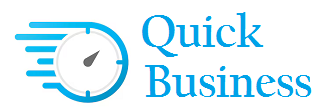The Federal Reserve or the Fed is a key player in shaping monetary policy of the United States. This is done via Fed’s most potent tool, which is their ability to influence interest rates. In the opinion of Kavan Choksi, the Fed follows a straightforward monetary theory wherein cutting rates lowers borrowing expenses, thereby encouraging businesses to take out loans expand production and hire more workers. This ultimately stimulates economic activity and growth. On the other hand, if the economy is overheating, the Fed may raise rates to cool things down. This helps prevent inflation from spiraling out of control.
Kavan Choksi underlines the impact of Fed interest rate change on bonds and credit card rates
Interest rate changes would have a real-world impact on how businesses and consumers can access credit for making necessary purchases. Such changes ripple through diverse sectors of the economy, right from stock prices and mortgage rates to even life insurance policies. Lower interest rates have a direct impact on the bond market. As yields from U.S. Treasury bonds and corporate bonds fall, they become much less attractive to new investors. Bond prices are known to move inversely to interest rates. Therefore, as interest rates fall, the price of bonds goes up.
The impact of interest rate change on bonds depends on the type:
- Government bonds: Such bonds are extremely sensitive to changes in interest rates. As rates go down, government bond prices ideally rise the most, as they are known to be among the safest investments.
- Corporate bonds: While such bonds are also impacted by interest rates change, this impact largely varies on the basis of the creditworthiness of the issuing company. High-quality and investment-grade corporate bonds typically follow government bonds more closely in comparison to lower-quality or high-yield bonds.
- Municipal bonds: Much like corporate bonds, municipal bonds are also affected. They, however, also can be influenced by tax considerations and local economic conditions.
According to Kavan Choksi, an increase in the interest rates additionally sends the price of bonds lower, which has a negative impact on fixed-income investors. When rates go up, people are ideally much less likely to borrow or refinance debt as doing so becomes more costly.
A Fed rate hike fuels a jump in the prime rate immediately. This rate is also known as Bank Prime Loan Rate, and is basically the rate that banks extend to their most credit-worthy customers. Bank Prime Loan Rate is the basis of other forms of consumer credit as a higher prime rate implies that banks shall increase fixed- and variable-rate borrowing expenses when assessing risk on less creditworthy consumers and companies.
The prime rate changes pretty fast in response to Fed rate changes. This change happens generally within hours or days. The majority of banks tend to adjust their prime rate right after a Fed announcement. Even though the Fed does not set the prime rate directly, changes to the federal funds rate are passed through almost immediately. Banks use the prime rate as a reference to assess the creditworthiness of an individual on the basis of their risk profile. Rates are affected for credit cards and other loans as both need extensive risk-profiling for consumers seeking credit. Variable-rate credit cards are tied to the prime rate directly. Therefore, when the Fed increases or lowers rates, the prime rate changes, and variable-rate credit cards also adjust their rates within one or two billing cycles.

